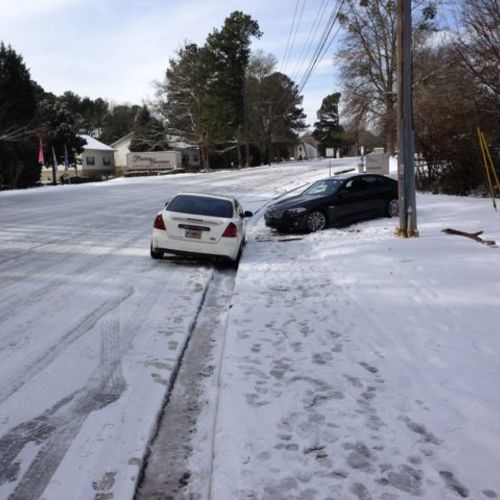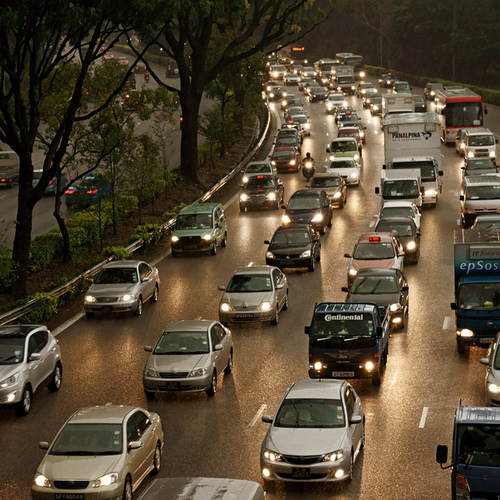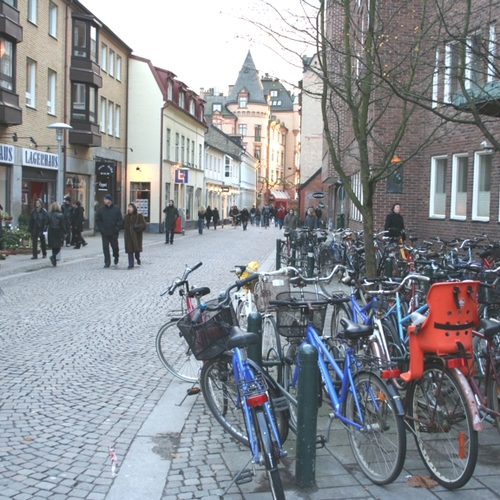Image Credit: Dan Burden
We spend a lot of time and money making our homes more energy efficient. Whether adding insulation, upgrading windows, replacing incandescent light bulbs, or replacing appliances, our efforts to use less energy save us money and help the environment. But what about where we live?
The U.S. Environmental Protection Agency (EPA) has just released a report on “location efficiency” — the idea that where we live has an impact on our energy consumption. The findings are clear and profound. In conventional suburban development, an average American home uses 108 million BTUs (British Thermal Units — a measure of energy consumption) per year for operation (heating, cooling, lighting, etc.). But that same house uses 132 million BTUs per year in transportation energy use — for a total of 240 million BTU/year. In other words, for that average home, 55% of its total energy use is for transportation, and 45% is for operations.
Now, if the house is located in a “transit-oriented development” (a pedestrian-friendly place where residents can walk to restaurants, basic services, and public transit), the transportation energy use drops to 39 million BTUs per year — just 26% of that home’s total annual energy use of 147 million BTU/year (see chart). The study was conducted by Jonathan Rose Companies, which has long championed “Smart Growth” and affordable housing. You can read about this new study on BuildingGreen.com.
The authors of the report examined the relative energy benefits of energy-efficient design and location for homes. They show that a family living in a conventional (non-energy-efficient) home in a transit-oriented neighborhood will spend a lot less on total energy than a family living in a 20% more energy-efficient home (built to Energy Star standards) in a conventional suburban development.
More energy for commuting than for operating the office
Our own publication, Environmental Building News, drew similar conclusions with commercial office buildings in an article “Driving to Green Buildings: The Transportation Energy Intensity of Buildings,” in September 2007. In that article, we reported that for a typical American office building, 30% more energy is consumed getting workers to and from the building than the building itself uses for operating — and if the office building is built to modern energy codes (ASHRAE 90.1 – 2004), the transportation energy use is 2.3 times the operating energy use.
All this is significant, as pointed out in an EPA press release, because buildings and transportation together account for 70% of U.S. energy consumption and 62% of greenhouse gas emissions. Most statistics about U.S. energy use by buildings, including those quoted by Vice President Al Gore and Architecture 2030 founder Ed Mazria, FAIA, consider only building operations, not how we get to and from those buildings. As the Jonathan Rose Companies study for EPA and our own research in 2007 point out, where we build can be even more important than how we build.
It’s little surprise, then — especially with gasoline prices trending upward — that real estate values in transit-oriented areas have been holding their own or rising, while real estate values in automobile-dependent suburbia have been falling.
In a 2010 book, “Foreclosing the Dream: How America’s Housing Crisis is Changing Our Cities and Suburbs,” William Lucy, Ph.D., a professor of urban and environmental planning at the University of Virginia School of Architecture, shows that foreclosures during 2008 and 2009 have been occurring more frequently in the car-dependent outer suburbs than in central cities and closer-in suburbs. “Location is more important than ever, and how location is interpreted has changed,” argues Lucy. He believes that there is desire by homeowners for more convenient locations, smaller units, and less driving hassle. These factors are all affecting property values.
What’s the old saying? “Fool me once, shame on you; fool me twice, shame on me.” Americans, like auto makers, are waking up to the reality of unstable and rising gasoline prices, and this is influencing their choices in home buying. That’s a good thing.
In addition to this Energy Solutions blog, Alex contributes to the weekly blog BuildingGreen’s Product of the Week, which profiles an interesting new green building product each week. He is founder of BuildingGreen, Inc. and executive editor of Environmental Building News. To keep up with his latest articles and musings, you can sign up for his Twitter feed.
Weekly Newsletter
Get building science and energy efficiency advice, plus special offers, in your inbox.
















0 Comments
Log in or create an account to post a comment.
Sign up Log in